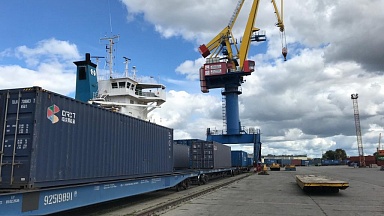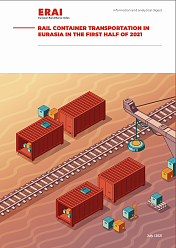How greatly have shipping prices from China been reduced? What are the causes, and how will this affect the price of goods on the Russian retail market? The experts weighed in.
Alexey Missailov, director of business development for FM Logistic in Russia, noted a drop in shipping rates from Southeast Asian countries to Europe and America. According to Missailov, there has been an 80% drop compared to January—March of last year, and as of today costs are at around $1500 for a forty-foot container. This has been facilitated by stabilization of cargo traffic both from Europe to China and vice versa. A second factor has been China’s lifting of COVID-related restrictions. He emphasized the need to expand terminals on the Chinese border and to enlarge the fleet in the Far East, while simultaneously bolstering dock-side infrastructure.
Nikolay Olshansky, CEO of ModernWay, noted that this trend primarily affects deep sea shipping from China to Europe and other global regions. The Russian market has its own nuances, related to the withdrawal of global container lines from the country and seriously reduced volumes of container shipments via the ports of the Northwest. In this context, the reduced rates were less drastic in nature. At the same time, there are other factors that significantly influence domestic Russian price formation, the chief of these being sanctions pressure and the reconstruction of logistical chains. Furthermore, after the rate reduction for China—Russia shipments there is no basis for their further reduction. Problems remain related to the overburdened Russian railroad infrastructure toward the east, particularly at the Eastern Polygon, and also related to a lack of viable alternative container routes from China via Saint Petersburg and Novorossiysk. However, subsidization by the Chinese railroad may alter the situation.
Stanislav Krok, commercial director of Alpha Transit, highlighted several factors that influence sea freight rates. First and foremost, this is due to a drop in speculative demand and reduced risk. Secondly, available capacity is increasing, and the number of offerings from key players on the global logistics market is growing.
This expert holds that, following a twofold rate drop on shipments from Chinese to Russian ports, in 2023 the rate reduction trend will remain, with seasonal fluctuations. There is the problem of balancing imports and exports, but we are not ruling out the possibility that, under the influence of certain factors, rates may increase above the current level, while container shipments from China to the RF will continue to develop.
Among the causes of reduced shipping prices, Kirill Latinsky, commercial director of SOTA Logistic, listed a drop in the industrial manufacturing index and reduced purchasing capacity, along with an expanded fleet of container carriers. Insufficient available capacity is leading to an increased transit time for deliveries. Consequently, freight recipients incur additional expenses, which are then passed on to end consumers.



